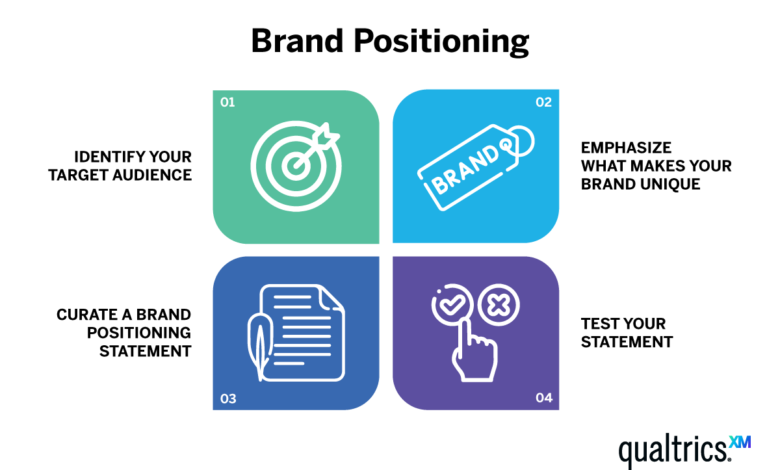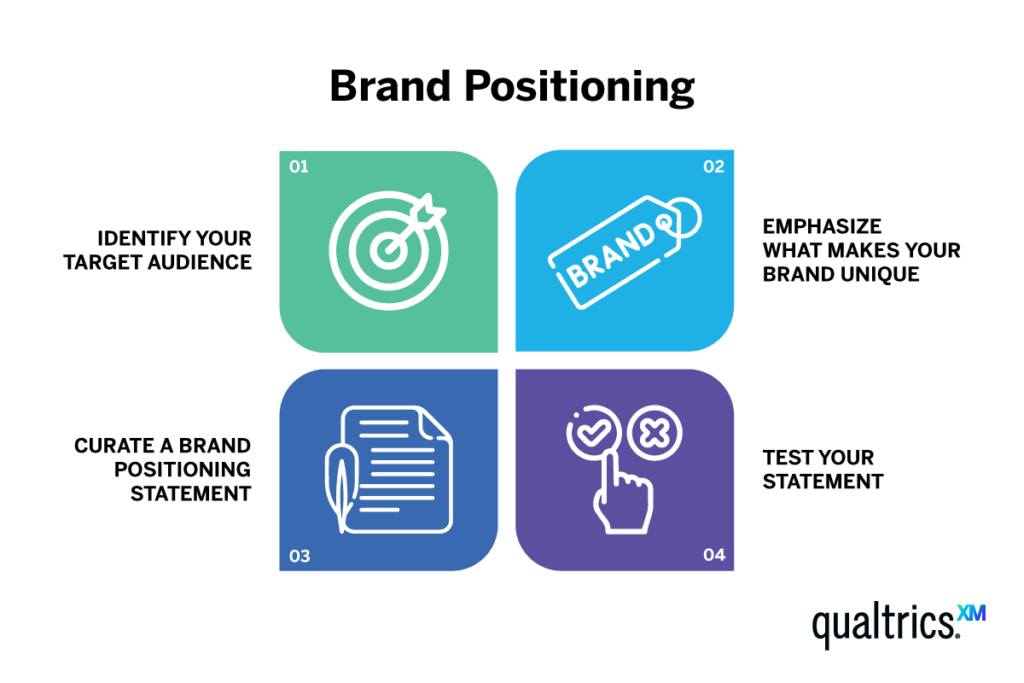Brand positioning, optimal, fast and effective positioning solution

Brand positioning is a crucial strategic process for establishing a brand’s unique place in the market relative to its competitors. It involves creating a distinct image and identity that resonates with your target audience. To achieve optimal, fast, and effective brand positioning, it’s important to follow a structured approach that includes defining your brand’s unique value, differentiating it from competitors, and communicating this positioning clearly to your audience.

Optimal Brand Positioning Solution:
1. Market Research and Analysis:
- Conduct Market Research: Gather data on market trends, customer preferences, and competitor positioning. Use surveys, interviews, and industry reports to understand your target audience and market dynamics.
- Analyze Competitors: Identify key competitors and evaluate their positioning strategies. Determine their strengths, weaknesses, and market positions to find opportunities for differentiation.
2. Define Your Brand’s Unique Value Proposition:
- Identify Unique Selling Points (USPs): Determine what makes your brand different and valuable to your target audience. Focus on unique features, benefits, or attributes that set your brand apart from competitors.
- Craft a Value Proposition Statement: Develop a clear and concise statement that communicates the core value your brand offers to customers. Ensure it addresses the needs and desires of your target audience.
3. Develop a Positioning Statement:
- Create a Positioning Statement: Write a positioning statement that articulates how you want your brand to be perceived in the market. This statement should include your target audience, the unique value you provide, and the key benefits of your brand.
- Example Format: “For [target audience], [brand name] is the [category/market] that [unique benefit] because [reason to believe].”
4. Align Brand Identity and Messaging:
- Design Brand Elements: Ensure that your brand’s visual identity (logo, colors, typography) and verbal identity (tone of voice, messaging) align with your positioning statement.
- Develop Key Messages: Create messaging that reinforces your brand’s position and communicates your unique value proposition effectively across all channels.
5. Implement Positioning Across Channels:
- Integrate Positioning in Marketing Efforts: Ensure that all marketing and communication materials reflect your brand’s positioning. This includes advertising, social media, content marketing, and public relations.
- Consistent Messaging: Maintain consistency in your messaging across all touchpoints to reinforce your brand’s position and build recognition.

6. Monitor and Adjust:
- Track Performance: Measure the effectiveness of your positioning strategy through metrics such as brand awareness, customer perceptions, and market share.
- Collect Feedback: Gather feedback from customers and stakeholders to assess how well your positioning resonates with your target audience.
- Adjust as Needed: Make adjustments to your positioning strategy based on performance data and feedback to ensure continued relevance and effectiveness.
Fast and Effective Positioning Solutions:
1. Leverage Existing Brand Equity:
- Utilize Existing Strengths: If your brand already has some recognition or strengths, build on these to expedite your positioning efforts.
- Capitalize on Success Stories: Highlight past successes or customer testimonials to reinforce your brand’s value quickly.
2. Focused Targeting:
- Niche Targeting: Focus on a specific niche or segment where you can position your brand most effectively. Tailor your messaging to address the unique needs of this audience.
- Rapid Prototyping: Test different positioning strategies quickly within your target niche to identify the most effective approach.
3. Digital and Social Media:
- Leverage Digital Channels: Use digital marketing and social media platforms for quick and cost-effective positioning. Engage with your audience through targeted ads, content marketing, and influencer partnerships.
- Real-Time Adjustments: Use real-time analytics to monitor the impact of your positioning efforts and make adjustments on the fly.

4. Collaborate with Industry Experts:
- Consult Experts: Work with branding experts or consultants to expedite the positioning process. Their expertise can help streamline your strategy and ensure effective execution.
- Partnerships: Form strategic partnerships with other brands or industry influencers to enhance your positioning and gain credibility.
5. Rapid Feedback Mechanisms:
- Conduct A/B Testing: Implement A/B testing for different positioning messages or campaigns to quickly identify what resonates best with your audience.
- Use Surveys and Focus Groups: Conduct surveys and focus groups to gather quick feedback on your positioning and adjust accordingly.
Conclusion:
Achieving optimal, fast, and effective brand positioning involves a strategic approach that starts with thorough market research and a clear understanding of your unique value proposition. By developing a strong positioning statement, aligning your brand identity and messaging, and implementing your strategy across all channels, you can create a distinct and compelling brand presence. Regular monitoring and adjustments based on feedback and performance data will ensure that your brand remains relevant and effective in its market positioning.

